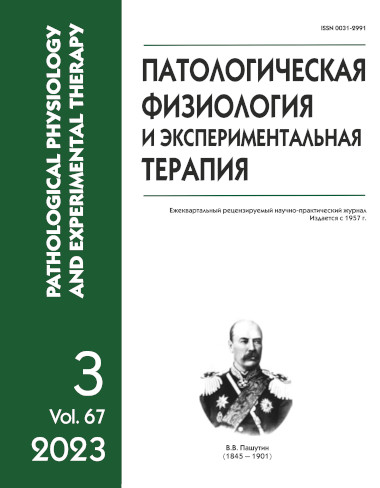The effect of polylactide microchamber wound dressing loaded with tannic acid on the microcirculation in the area of acute experimental excision skin wound defect
Abstract
Introduction. The high prevalence of open skin lesions calls for new approaches to treatment of skin wounds. Considering therapeutic and cost efficiency, a polylactide microchamber wound dressing loaded with tannic acid is promising. The dynamics of skin wound healing closely correlates with changes in the microcirculatory system. Aim. To evaluate microcirculatory changes during the application of a polylactide microchamber wound dressing loaded with tannic acid. Methods. The study was performed on 55 white male rats divided into four groups: intact animals (n=10), comparison group (n=15), placebo group (n=15), and experimental group (n=15). An acute, 10×10 mm, excisional skin wound was created in the animals, and it was not subjected to any treatment. Animals of the placebo group were subjected to one application of a microchamber polylactide biodegradable coating without active components on the full-thickness experimental skin defect. Rats of the experimental group were subjected to one application of polylactide biodegradable coating of the same size with microchambers loaded with tannic acid. The state of microcirculation in all experimental groups was assessed by laser Doppler flowmetry. The mean perfusion rate was determined along with the amplitudes of endothelial, neurogenic, myogenic, pulse, and respiratory oscillations on the 7th and 14th days of the experiment. Results were compared using non-parametric Mann-Whitney test for independent samples and Wilcoxon test for dependent variables. A critical p-value of 0.05 was used. Results. The skin damage caused persistent microcirculatory changes at the wound defect periphery. These changes were accompanied by redistribution of the roles of active and passive mechanisms that modulate the microcirculation and by an increase in the perfusion rate by 27-28% by the 7th and 14th days of the study. Closure of a skin defect with a wound dressing without active ingredients caused a decrease in the increased perfusion rate by 5.3% by the 7th day and by 13% by the 14th day vs. comparison group. Loading the coating chambers with tannic acid increased the effectiveness of perfusion rate normalization by 11.3% by the 7th day and caused complete normalization by the 14th day. Also, in this group by the 14th day, there was complete normalization of endothelial, neurogenic, and myogenic fluctuations. Conclusion. Loading a polylactide microchamber wound dressing with tannic acid increases its effectiveness in normalizing the skin microcirculation at the edges of a wound defect and facilitates wound healing.






